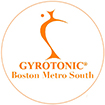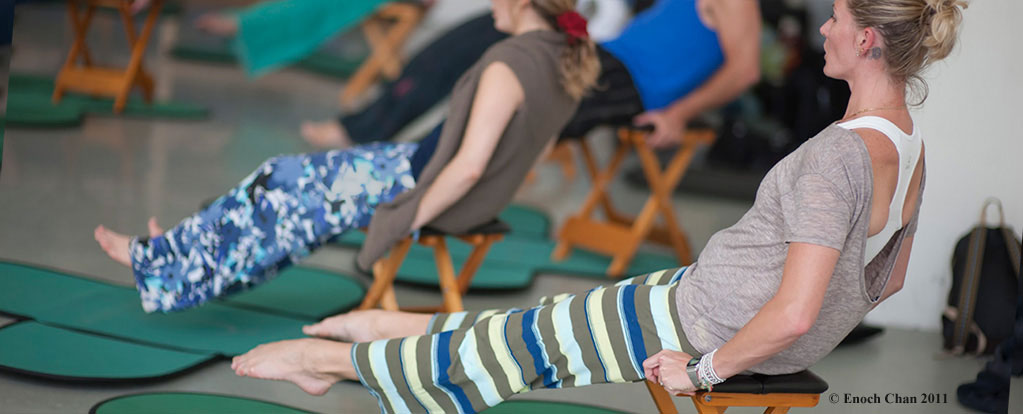The GYROKINESIS® methodology incorporates many varied concepts, but three key principles are important to consider, according to the master trainers interviewed for this article.
1. Narrowing of the Pelvis. This principle, which applies in all positions (sitting, standing and lying down), facilitates the creation of space between the vertebrae. In a contrasting movement (i.e., a movement in which parts of the body simultaneously reach in opposite directions), the body’s energy spreads upward to elevate the spine while, at the same time, the legs and feet connect to the ground, spreading energy downward. Between these two contrasting motions, the pelvis must be properly positioned in order to provide spinal support, and narrowing accomplishes that. Physical therapist and master trainer Johannes Randolf of Linz, Austria, describes the technique this way: “A basis for all the work, it is a unique type of muscle engagement that incorporates among [other areas] the pelvic floor (without “just” squeezing), the transverse muscle and the oblique muscles. If one does [narrowing] correctly, the spine will automatically be lengthened and the disks supported. Many of my patients/clients move in a small range and build up the deep inner muscles that support the spine’s movements right at the joints. Through that training, the deep inner stability gets better very quickly.”
2. The Fifth Line. What Horvath calls the principle of the Fifth Line is not considered an anatomical reference, but rather a way to integrate the body’s own internal energetic support into the exercise experience. “It can be compared to central currents of electricity that move through the spine, the arms and the legs. This energy can enter and exit freely, and clients are taught to reach from their center, through these energetic lines, while performing GYROKINESIS® movements,” explains Matt Aversa, vice president and chief operating officer of GYROTONIC® and GYROKINESIS® International Headquarters.
Master trainer Lisa Marie Goodwin of White Crane Movement Arts in Marina del Rey, California, links her description of the Fifth Line to Narrowing of the Pelvis: “The . . . Fifth Line through the legs represents the direction of forces of energy executed down and out from the Narrowing of the Pelvis. If you simply think of four lines on the leg being the anterior, posterior, medial and lateral, then the Fifth Line would be the center. One may like to think of it as the energy of the bone marrow extending out from the lower back through the heels. The Fifth Line is really not only a straight line of energy; it’s more of a continual flow, whether it is in the form of an arch, a side bend or a forward bend. We want to be working through the Fifth Line of our spine, and limbs, at all times.”
3. The Seed Center. Goodwin believes that the third principle, the Seed Center, is organically linked to Horvath’s other two axioms and that all three are designed to work together. “The Seed Center, or yolk center, is that place of germination where the life force begins. It starts from the energy body and moves into the physical or anatomical body,” she says. Aversa describes it as “the engine of the organism, where the body’s energy is activated, where one’s strength and vitality originate. In GYROKINESIS® we begin moving from that place to awaken this vitality and release blocked or dormant energy.” Working from the Seed Center, according to Goodwin, allows students to connect with the moves on a deeper level.

